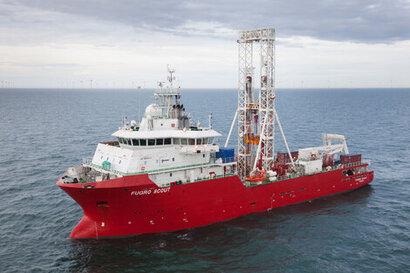
The detailed investigations will provide data on subsurface conditions at planned wind turbine locations, inter-array cable routes, and platform foundations, directly informing the safe and efficient design of the wind farms.
Starting in mid-May, Fugro will mobilise multiple geotechnical vessels to carry out the fieldwork 122 km off the northeast coast of England. This will include a range of techniques such as cone penetration tests (CPTs), vibrocores, and sampling boreholes. To ensure robust and rapid collection of deep seabed data, Fugro will use its advanced SEACALF MkV Deep Drive system. This technology enhances the efficiency and reliability of seabed investigations, contributing to faster project delivery and reduced environmental impact.
The project will also use VirGeo, a collaborative cloud-based Geo-data platform, to centralise project information and streamline data delivery to all stakeholders.
“This year’s site investigation at the eastern array builds upon similar work completed at the western array in 2024” said Colin McAllister, Development Project Lead for DBS offshore wind farms. “The level of detail obtained from these surveys is crucial in developing the most effective foundation designs for each location. The DBS projects are critical infrastructure projects and have the potential to supply 3 million homes with 3 GW of offshore wind generation capacity, supporting the UK Government’s clean power ambitions.”
This contract builds on previous work Fugro has completed for the DBS offshore wind farm including preliminary geophysical and geotechnical investigations, a shallow geotechnical survey on the export cable route, and a detailed geotechnical investigation of DBS west.
For additional information:

